Author: Ishanee@IOSG
Introduction :
Full-chain games like “The Dark Forest” have proven that you can put game logic on the chain, and because of its permissionless interoperability, it encourages communities to create new tools, alliances, DAOs, etc. Prior to this, although there have been many records of building autonomous worlds and motivations, there have not been too many articles on full-chain game engines, which we believe is one of the most fascinating new fields in this direction.
Game Development: Traditional Games and Full-Chain Games
In the past, game engines like Unreal, Unity, and Phaser were used as one-stop services for traditional game development. It includes the basic building blocks of game development, such as control of motion, 2D and 3D rendering, object collision detection, sound, color, scripts and even physical engines, server client architecture, PC / game console / mobile phone frameworks, distribution mechanisms such as trading markets, etc.
- iBox Chain Box Fully Upgraded, Meta-Universe Host Bobo Takes Office
- Apple’s MR headset may be launched in June, what are the related projects in this field?
- Layout of the Metaverse Industry’s New Track, Jianye’s “Circle of Friends” Expands Again
When “World of Warcraft” was launched, Blizzard had been working on the game’s network technology stack for 4 years, but only spent one year on the game’s content. Shortly after Unity was released in 2005, due to its modular technology stack, development time was reduced from 4 years to a few months.
In full-chain games, the game state will be stored entirely on the blockchain, which means that a series of unique challenges and new infrastructure will be created. The first MUD engine developed for the Ethereum ecosystem was launched by Lattice. Afterwards, several other engines appeared for different ecosystems and using different programming languages, such as the DojoEngine used for starkware.
The First Game Engine: MUD
Lattice’s MUD was created during the 0xBlockingrc Residency period in the third quarter of 2022. During this period, Lattice tried to create several full-chain games, although the gameplay and styles were different, they all encountered the same blockchain problems. It is not a complex technical problem, but a large amount of busy work. This is how they launched MUD, the first full-chain game engine.

When the MUD team tried to create games, they did use game engines or tools such as PhaserJS, Three, and Godot, but these are client-side engines whose main job is to accept the world’s state and make it readable for players. In the past, the shared state of the world was “Is the elephant on the chessboard?” while readability is “A chess piece with fancy 3D projection, a user interface that moves it on the chessboard based on the rules of elephant movement, etc.”
Understanding the ECS engine architecture used by MUD
They use the ECS (entity component system) architecture, in which each full-chain game will deploy a world contract, which is a registry of all objects (Entities) in this world. Entities are numeric IDs, and components are attached to Entities and can be added to the world.
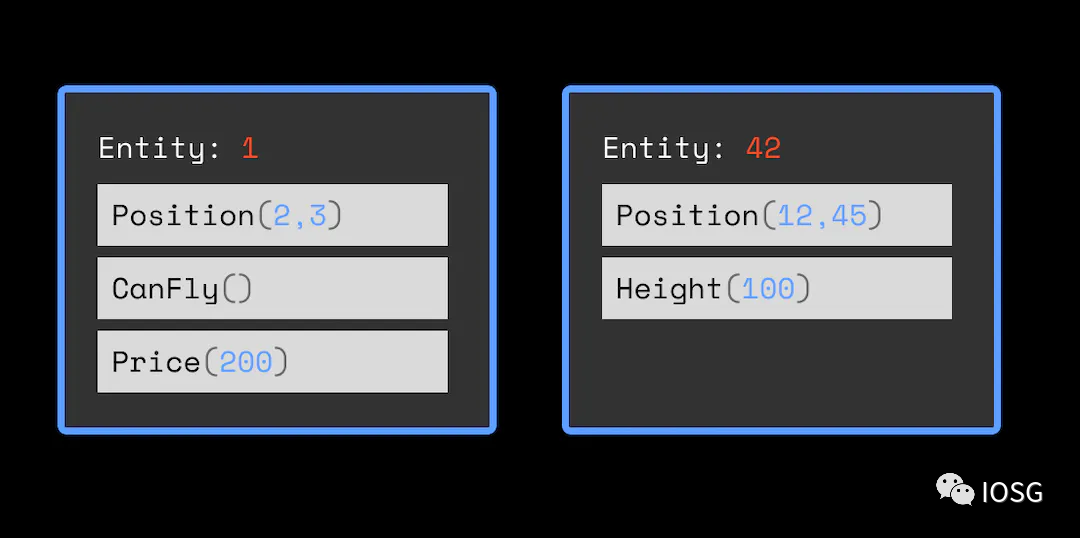
In this example, Entity 1 can be a dragon character, and Position, CanFly, and Price are three different components. The components themselves have no logic and can be added to new Entities through system contracts. A system contract needs to have write access to the owner’s components. In MUD, there is no difference between first-party and third-party developers.
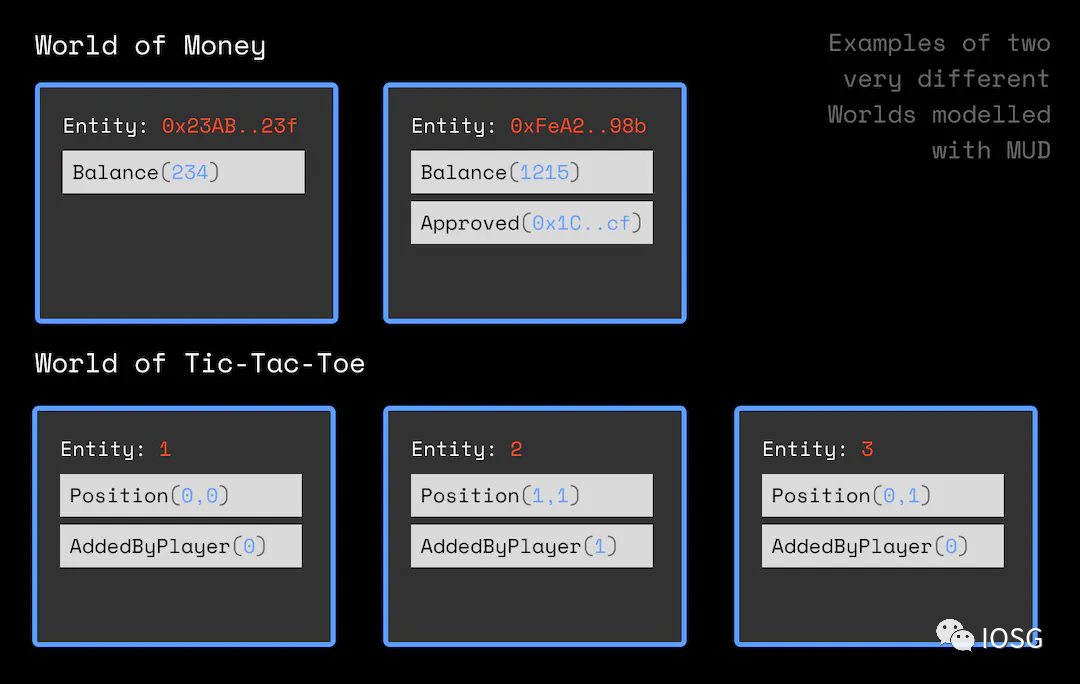
Dojo Engine on StarkNet
The Dojo Engine is an open-source ECS framework, like the MUD built for the StarkNet ecosystem, but incompatible with EVM and written in Cairo. The Dojo engineering team includes Realms, Briq, cartridge_gg, topology, starknet, and other project teams.
First game: Dark Forest
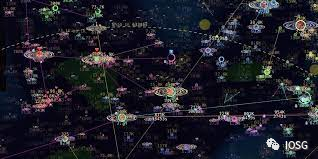
Dark Forest is an MMORTS space warfare game where players discover and conquer planets in an infinitely randomly generated universe. The game’s beta version was launched in 2020, and its V0.3 version was released for a week on the Ropsten testnet. Players who participated in the test were whitelisted and competed for 1024Dai as part of the prize pool. So far, more than 10,000 players have participated in Dark Forest rounds, consuming tens of trillions of gas on Ropsten, xDai, and Gnosis Chain.
Dark Forest Ecosystem
-
Plug-ins
-
Alternative customers
-
GPU miners
-
Corporate players
-
Data/Broadcasting market – Players can add new features through the data market and apply them in the game.
Dark Forest does not distinguish between EOA players and smart contract players, and a new type of gamer community has emerged.
-
DF DAO – Created in May 2021
-
Orden GG – Another alliance competing with DF DAO
-
Astral Colossus is a smart contract (robot) player of DF DAO. This player has several restrictions, such as not being able to extract resources, and only playing to increase the score of Dark Forest DAO on the leaderboard. Any contribution to a round of victory by the player is recorded.
Whole Chain Game Ecosystem
As you can see, Ethereum, OP, and StarkNet are the three key ecosystems.
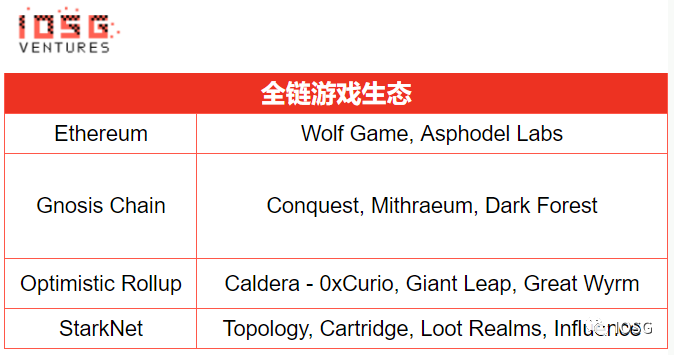
Challenges to the Development of Whole Chain Games
These challenges can be classified into three aspects: technology, onboarding, and economic monetization.
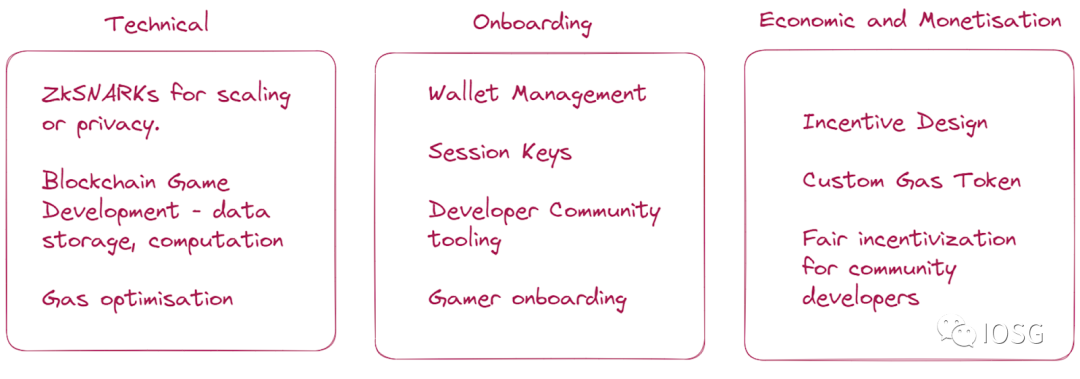
Technology
Developing whole-chain games requires complex technology and is still a daunting task. With the support of MUD and DOJO, the development threshold has been lowered, but it still cannot provide convenience for developers like Unity. The technical challenges of game development also include scalability challenges.
That’s why several teams are using rollup as a service companies such as Caldera to create OPStack, or using client verification, or building directly on L2. Some builders are also closely watching verifiable decentralized computing networks like RiscZero to expand the scope of their smart contracts. Gas optimization is also a big problem, which is related to technology and scalability, and partly to game design.
SNARKs are used for privacy protection or for scalability. Dark Forest uses zkps to add incompleteness to the game, without it, any player can see the whole worldview, while others use it to put heavy computational tasks on the client and synchronize the state (e.g., playmint).
Onboarding
If the entire chain game wants to attract more chain game communities (before they consider large-scale adoption), wallet management is the most important thing. Since the game is completely on-chain, gamers are likely to have to sign every action in the game’s pop-up window, which will make the user experience very poor. Session Keys is the simplest way to solve this problem, but there are potential security risks. Current game developers do not want players to hold high-value items in their wallets, so this is not the most pressing issue at the moment, but as more and more players flock in, this problem will be solved sooner or later.
Another aspect is the onboarding of developers, to encourage and attract game refiters to contribute and expand the game, which will naturally increase the value of the autonomous world. This is mainly achieved by providing developers with appropriate tools and ensuring appropriate monetization or rewarding their contributions.
Economic monetization
With the success of the first on-chain game, this challenge will become clearer. The economy in the game world will contribute to the fun, mining, and resource collection of any on-chain game itself, and will require multiple adjustments to ensure that players have fun in the game.
Today’s game developers monetize in an interesting way by using sequencer fees, using their tokens in the game and using tokens on L2 to get the desired gas.
Outlook
The rapid iteration of these engines is beginning to show us the arrival of a composable, scalable, and fully open era of on-chain games. Although the current on-chain games have yet to be optimized for playability and interaction difficulty, and the limitations of deployable game types and technologies are also very obvious. But the on-chain route is one of the most potential tracks that we see after DeFi, which can truly subvert traditional game logic and combine narrative and products. This kind of orthodox feature also makes the quality and activity of the developer community very high. Soon, a series of ecological games, tools, guilds and other projects based on the underlying architecture of various on-chain game engines will emerge on top of each other, giving birth to a real metaverse economy and social interaction.
The selection contains HTML code that appears to be incomplete or meaningless.
Like what you're reading? Subscribe to our top stories.
We will continue to update Gambling Chain; if you have any questions or suggestions, please contact us!